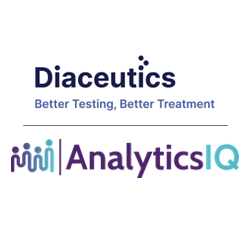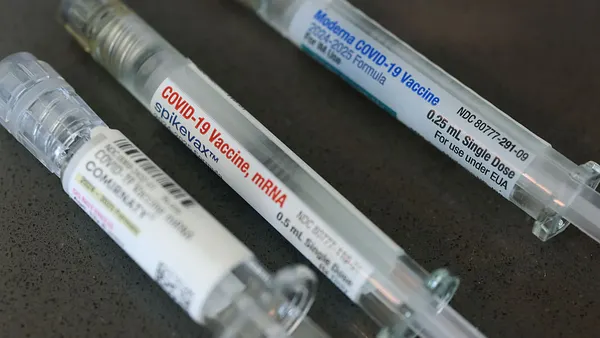When the Lupus Research Alliance formed in 1999, treatment options for the condition were scarce. Doctors relied on a selection of repurposed drugs, antimalarials, steroids and chemotherapies to slow the inflammatory autoimmune disease, said Albert Roy, CEO and president of the LRA and its clinical research affiliate, Lupus Therapeutics.
Now, game-changing cell therapy treatments may be around the corner.
The organization’s efforts enabled the potential breakthrough and, in the meantime, have made it a major player in lupus research.
“[Our organizations] are active in more than 25% of all lupus clinical trials in the world,” Roy said.
If the data pans out for cell therapies in mid-stage trials, the next hurdle will be putting those treatments on a fast track to patients by working with the FDA, he said.
“[There are] so many different ways companies are thinking about cell therapies. It's not just CAR-T. There are T cell engagers, allogeneic, off-the-shelf CAR-Ts, and autologous CAR-Ts,” Roy said.
However, the next few years will be critical for the “if” in that equation. Among the phase 2 contenders is Novartis’ YTB323, a CAR-T cell therapy for severe refractive systemic lupus erythematosus and lupus nephritis.
“I would anticipate we'll start seeing efficacy reports and signals once these trials start reporting out in the next couple of years. That’s my expectation,” Roy said.
In the meantime, the LRA is expanding its business model by adding a venture philanthropy initiative, Lupus Ventures, which will roll out this year. It’s also prioritizing research that could unravel more of the underlying mysteries of the disease, including its heterogeneity, which is why its manifestations vary. The search for biomarkers is also critical work that can help stratify lupus patients to determine who might respond best to various drugs.
“We think lupus is a disease where personalized medicine and precision medicine are very applicable,” Roy said. “But we’ve got a long way to go before we have these specific biomarkers to allow us to move in that direction.”
Unraveling a complex condition
Lupus drug development stagnated for years after the FDA approved the first lupus drug, Benlysta, in 2011.
“We said, we’ve got to do better,” Roy said.
The LRA formed Lupus Therapeutics in 2018 and built infrastructure to support the industry’s drug development efforts, including the Lupus Clinical Investigator’s Network, a cohort of 57 academic institutions.
The effort paid off.
“In 2021 there were two new drugs approved for lupus and lupus nephritis,” Roy said.
The new drugs include AstraZeneca’s Saphnelo, a monoclonal antibody that became the first approval for systemic lupus erythematosus in 10 years, and Aurinia’s Lupkynis, the first FDA-approved oral therapy for lupus nephritis, lupus-related kidney damage and failure.
“Lupus is a disease where personalized medicine and precision medicine are very applicable. But we’ve got a long way to go before we have specific biomarkers to allow us to move in that direction.”

Albert Roy
CEO, president, Lupus Research Alliance, Lupus Therapeutics
Another lupus drug, obinutuzumab from Genentech, is now nearing the finish line, with an FDA decision expected in October.
Pursuing a new paradigm
But Roy reserves his highest hopes for cell therapies, which have produced dramatic results in a small number of patients.
“An LRA-funded investigator in 2015 established a proof of concept that a specific CAR-T therapy … could actually cure mice of lupus,” Roy said.
It paved the way for a human CAR-T cell study led by Dr. Georg Schett, vice president of research at the Deutsches Zentrum Immuntherapie, and professor and chair at the Department of Internal Medicine at FAU Erlangen-Nuremberg and Universitätsklinikum in Germany. The treatment put all five severely ill systemic lupus erythematosus patients into drug-free remission.
Follow-up trials by Dr. Schett and others have also seen success, but also some relapses. Despite setbacks, interest in the technology has skyrocketed, and companies such as Kyverna Therapeutics, Cabaletta Bio, Artiva Biotherapeutics and Novartis are now in a race to the finish.
Companies are also exploring ways to avoid a major drawback of CAR-T cell therapy, the chemotherapy used before the infusion of healthy cells.
“It's hard to know who's winning. Pretty much any major pharmaceutical company that developed cell therapies for cancer … is trying to reposition those products into autoimmune disease,” he said.
If the treatments continue to prove safe and effective, an additional hurdle remains, Roy said — making it affordable.
While cutting-edge cell therapy treatments capture a lot of buzz, Roy said much of the LRA’s focus is still on understanding less flashy but critical elements of the disease.
“Our approach is what excites me. We're trying to figure out how best to treat this disease from a scientific and a research perspective,’ Roy said.
With each step forward, researchers are getting closer to finding out what drives the disease.
“If we solve that I think we'll put ourselves out of business, which might be a good thing,” Roy said.












